By Kristin Fletcher
Click here to read Part 1 of the Greenbelt Solar Homes Tour, which also covers two homes.
Stop #3: 103 Ridge Road, home of Joe and Alice Murray
With many commemorative events surrounding Greenbelt’s 75th anniversary taking place in 2012, there has been frequent mention of the original town “pioneers.” One could certainly refer to Joe and Alice Murray as Greenbelt solar pioneers, as they first installed solar systems on their house on Woodland Way in the 1970s. When asked how long he had been interested in solar, Joe mentions a moment in 7th grade when his teacher said there was only enough coal to last another 200 years. Joe’s immediate thought was, what then?
They actually had two systems on the roof of their Woodland home constructed by a friend, one for hot water and one for hot air ((the air was pulled through the baffles of a large glazed rectangular box). It was the early years though, and Joe admits they were learning through trial and error and the system wasn’t the best.
Undeterred, the Murrays took advantage of federal solar rebates courtesy of the Carter administration and built a passive solar house with a modified envelope system in 1981. In an envelope system, the warm air rises through the floor (yes, you can look right down through the floorboards and see the basement). Other parts of the envelope are a four-foot crawl space underneath the oak basement floor and a gorgeous 240 square foot thermopaned sunroom on the main level. The original main heat source was a wood stove, which actually kept the house at 65 degrees, even during a fuel crisis when it was 0 degrees outside and Joe did not get up in the middle of the night to stoke it. Eventually they added a heat pump for when they had to spend some extended time overseas.
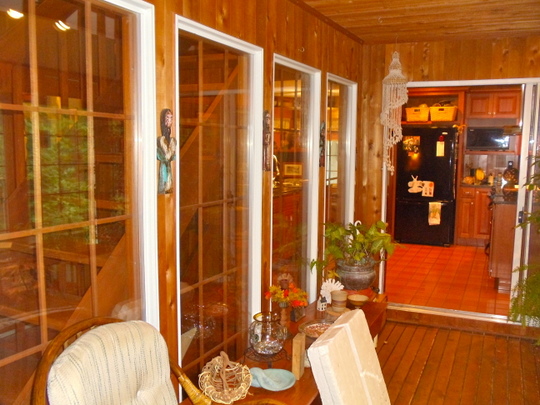
As part of the passive solar design, the entire south facing wall is a stunning 500 square feet of windows with thermopane glass on south and east faces. The concrete walls in the basement and extra mass and the amount of wood used in joints were also part of the design. Joe demonstrated for me how the six-inch exterior walls, factory prefabricated from 8 by 16 foot sheets of 4½ inch extruded polystyrene, were constructed with slots for the wood studs so that there were no points of thermal break.

Other energy saving features include compact fluorescent bulbs (CFLs) throughout house, vestibules or “ air chambers” at all points of entry/exit, and something I had never seen before, insulated window quilts, on all north and east windows. Yes, they do really look like quilts and roll up and down just like a shade, but they have special insulation material sewn in the fabric and they fit snug against the window frame because they go up and down inside a track. Joe says there is only one company called Window Quilt that still makes them.


The Murrays recently took advantage of a Pepco subsidy for home energy survey, which resulted in a significant amount of energy insulation upgrades. In their attic, they increased the insulation level to R52 (R-value is a measure of how well something insulates—the bigger the value, the better the insulation), and added an insulating tent around the attic entrance. In the crawlspace, they installed 6 mil polyethylene on the floor and sprayed 1/2 inch foam on all band boards and top plates. It’s made a difference of about $40 a month on their utility bill, and they no longer close up the attic vents since it is now properly insulated.
Joe and Alice drive a Prius hybrid and also do composting in their kitchen. Joe feels that we all have a collective responsibility to take care of the planet. If we took care of the planet as well as Joe and Alice took care of their home, we wouldn’t have to worry. This is the fourth time the house has been on the tour, and although it was built in 1981, you would never know it from its immaculate condition. It was a real joy to simply experience the fine craftsmanship and good company.
Stop #4: 45 Lakeside Drive, home of John Lippert
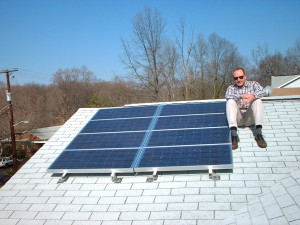
Like many of us in Greenbelt who enjoy the 60% tree canopy over our city, John’s house is blessed with abundant shade. With only a tiny south-facing roof, he was able to install a small 520 watt grid-connected PV system with a grant from the state of Maryland through the Million Solar Roofs project. When asked why he installed a system that meets only a small percentage of his electricity needs, John, who serves on the Greenbelt Advisory Committee on Sustainability (Green ACES), said that he believes when it comes to promoting sustainability you really have to live it.
John has spent 30 years in the energy field and is a former Department of Energy (DOE) contractor, so he really knows his stuff when it comes to energy efficiency. Light fixtures and lamps all use compact fluorescents (CFLs), T-8 fluorescents with electronic ballasts, or high efficiency screw-in LED bulbs. It turns out not all LED lights are created equal; when picking one out, John says to make sure the DOE Lighting Facts label is on the box to ensure it was properly tested.

John also showed us a handy little gadget called a Kill-a-Watt meter that displays how much energy a device is using. And here’s a little secret for those of us who live in GHI homes, GHI has one available for members to borrow!
Speaking of GHI, if you live in one of their co-ops like I do, you know all about electric baseboard heating and how inefficient and costly it can be. John’s house also has baseboard heating, but he hasn’t had to turn them on for years thanks to four ultra efficient ductless heat pumps (two upstairs in the bedroom and two downstairs in the basement). The nice thing is that they also dehumidify the downstairs and air condition the upstairs in the summer. John keeps a hydrometer downstairs and recommends keeping the humidity level at 65% or lower to avoid icky mold problems (another issue often cited in GHI homes).
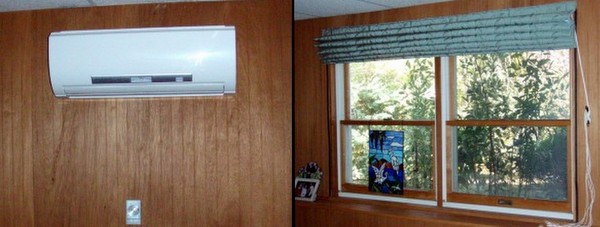
Even though John’s house came with an energy savings package and is pretty airtight according to the results of a blower door test (used when conducting energy audits), John is always looking for more ways to save energy and conserve resources. Other energy efficient features include insulated window quilts and Roman shades to protect the home from air infiltration, an automatic sensor-activated faucet to help conserve water, front loading washer and solar tube skylights to decrease the need for lights in the central bathroom and kitchen. The Gossamer brand ceiling fans look almost space age, with unique energy-saving blades and dimmable CFL bulbs.

When it comes to cooking, they have a couple of different approaches. Their kitchen has a special trivection oven, which is like a microwave, convection oven and regular oven all in one. It can cook potatoes in half the time. John’s wife also likes to occasionally use her portable solar cooker in summer to avoid heating up the kitchen. There are many types of solar cookers, and hers is an older model that takes a few hours to cook a casserole, for example. But how cool is it to cook from the sun! They also sometimes use a chimney-style charcoal grill in the summer that requires no lighter fluid.

Both John and his wife also drive Toytota Prius hybrid electric vehicles to get around reliably with great gas mileage. This is their ninth year on the tour but there is always something new to share and they always have useful manufacturer information on hand. Ultimately they would like to have a zero footprint (or net-zero) house that is completely powered by renewable energy, and believe it or not, these types of houses are being built today.
Author’s note: The two additional Greenbelt homes on the tour, #2 and #16 Maplewood Court, were not included here simply because the author ran out of time for photos and interviews.




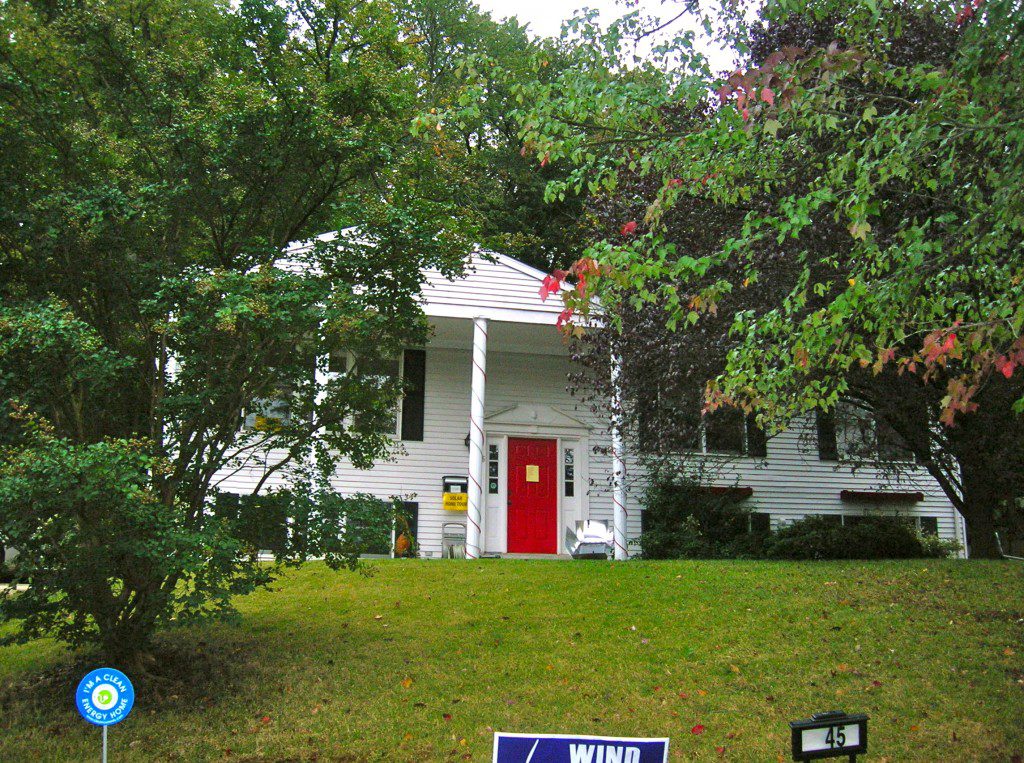
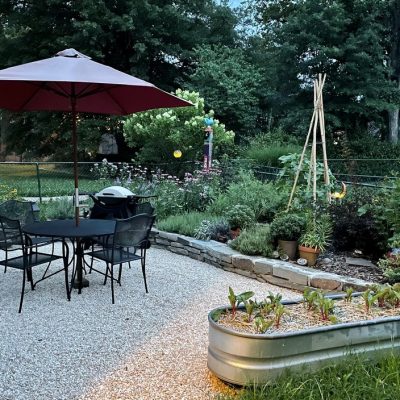






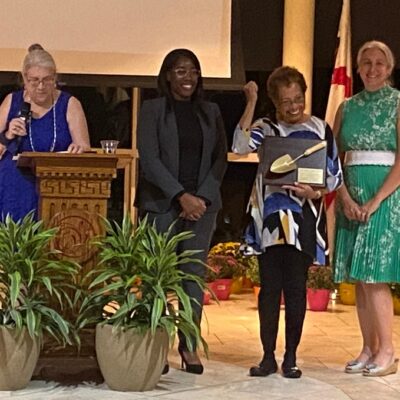
Leave a Reply